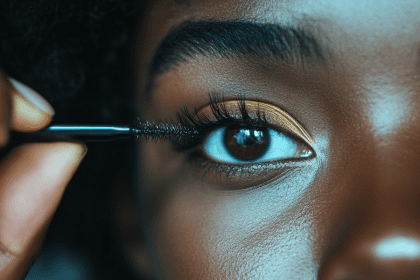When it comes to dental health disparities in America, the numbers tell a devastating story. Black adults face twice the likelihood of unmet dental needs compared to their White counterparts, while less than 4% of dentists identify as Black. These statistics reveal a systemic problem that goes far beyond simple access and care to smiles.
The impact of these disparities reaches into every aspect of daily life, affecting everything from job opportunities to social interactions. As social media continues to amplify dental stigma, the Black community faces increasing pressure while dealing with historically rooted barriers to care.
6 startling facts about dental discrimination
- A staggering 92% of Americans postpone dental care due to rising costs, with 83% avoiding even emergency treatment because of financial barriers. This crisis hits the Black community particularly hard, as economic disparities and lack of comprehensive insurance coverage create additional obstacles to necessary care. The impact of delayed treatment often leads to more severe health issues and higher long-term costs.
- Cultural barriers compound the problem, as the severe underrepresentation of Black dentists creates additional obstacles to comfortable and culturally competent care. Many patients report feeling misunderstood or dismissed when seeking treatment, leading to reluctance in pursuing regular dental check-ups. The shortage of Black dental professionals also means fewer role models to inspire the next generation of practitioners.
- Insurance coverage often falls dramatically short, with typical plans covering only $1,000 annually while a single crown can cost $1,500 or more. This gap between coverage and actual costs forces many to make impossible choices between financial stability and dental health. The limited coverage particularly impacts those requiring extensive work or emergency procedures.
- Social media amplifies dental stigma through memes and jokes that perpetuate harmful stereotypes about people with visible dental issues. These digital interactions create real-world consequences, affecting self-esteem and social opportunities. The casual cruelty of online commentary can discourage people from seeking necessary treatment.
- Research shows people with missing visible teeth face discrimination across multiple social situations, affecting everything from job opportunities to personal relationships. This discrimination creates a cycle where dental issues impact economic opportunities, which in turn limits access to dental care.
- The gap in preventive dental care between Black and White children continues to grow, creating lifelong health implications. Early dental experiences shape future attitudes toward oral health care, making this disparity particularly concerning for long-term community health outcomes.
The real cost of smile shaming
Beyond the financial burden, dental stigma creates profound psychological impacts. Social media’s role in perpetuating negative stereotypes about dental appearance particularly affects the Black community, where historical barriers to care have created visible health disparities. The emotional toll of constant judgment can lead to decreased social interaction, reduced professional opportunities and diminished quality of life.
Many individuals report experiencing anxiety and depression related to dental appearance, leading to a cycle of isolation that can further impact mental health. The intersection of racial discrimination and dental stigma creates unique challenges that require targeted support and understanding.
Breaking down the barriers
The challenges extend far beyond simple economics. Many working individuals struggle to access care during traditional office hours, while some communities lack conveniently located dental practices entirely. These practical barriers combine with social stigma to create formidable obstacles to treatment.
Transportation issues, childcare needs and inflexible work schedules further complicate access to regular dental care. Some patients report traveling hours to find affordable treatment options, creating additional strain on already limited resources.
Understanding insurance inadequacies
Dental insurance often provides inadequate coverage for necessary procedures. Healthcare professional Toni Meyerkord highlights how standard coverage limits fail to match modern treatment costs, leaving patients to choose between financial hardship or neglecting their health.
The complexity of insurance systems can also create confusion and frustration, with many patients struggling to understand their benefits or navigate payment options. Some providers have begun offering sliding scale payments or payment plans, but these solutions remain insufficient for many families.
The impact of representation
With Black dentists making up less than 4% of the profession, many patients struggle to find providers who understand their specific needs and concerns. This lack of representation can affect everything from communication comfort to treatment approaches.
The shortage of Black dental professionals also impacts mentorship opportunities and community outreach efforts. Programs aimed at increasing diversity in dental education face numerous challenges, including financial barriers and limited support systems.
Social media’s role
Digital platforms have become breeding grounds for dental stigma, with memes and jokes often targeting those with visible dental issues. This online ridicule creates real-world consequences, deterring people from seeking necessary care.
The constant exposure to idealized images of perfect smiles can create unrealistic expectations and increase anxiety about dental appearance. Social media influencers rarely discuss the reality of dental health challenges, contributing to a culture of shame and silence.
The childhood connection
Early dental experiences significantly impact lifelong oral health. The disparity in preventive care between Black and White children creates a foundation for ongoing health inequities that can persist through generations.
Schools in predominantly Black neighborhoods often lack resources for dental health education and screening programs. This early gap in access to information and care can shape attitudes toward dental health throughout life.
Fighting back against discrimination
Dr. Brandon Mack emphasizes the importance of destigmatizing shame around dental health. Breaking the cycle of embarrassment and delayed treatment requires both individual and community action.
Community organizations have begun developing programs to address these disparities, including mobile dental clinics and educational initiatives. These efforts represent important steps toward creating more equitable access to care.
Educational empowerment
Improving dental health literacy within the Black community proves crucial for long-term change. Understanding the connection between oral health and overall wellness can motivate earlier intervention and preventive care.
Educational programs must address both practical knowledge about dental care and the systemic barriers that affect access to treatment. This comprehensive approach helps create more informed and empowered patients.
Avoiding predatory practices
The desperation created by dental discrimination can make people vulnerable to unlicensed practitioners offering quick fixes. Education about the importance of licensed care helps protect community members from potentially harmful treatments.
Reports of underground dental practices highlight the urgent need for affordable, accessible care options. Community awareness campaigns can help identify and avoid dangerous alternatives to professional treatment.
Creating sustainable solutions
Addressing dental discrimination requires a multi-faceted approach including expanded insurance coverage, increased representation in the dental profession and community education initiatives.
Policy changes at both state and federal levels could help create more comprehensive coverage options and support for dental health programs. Increasing diversity in dental education programs remains crucial for long-term change.
The path forward
Breaking the cycle of smile shaming and dental discrimination demands collective action from healthcare providers, policymakers and communities. Everyone deserves access to quality dental care without facing judgment or shame.
Success requires sustained commitment to addressing both immediate needs and systemic barriers. By working together, communities can create positive change and ensure better dental health outcomes for future generations.

















